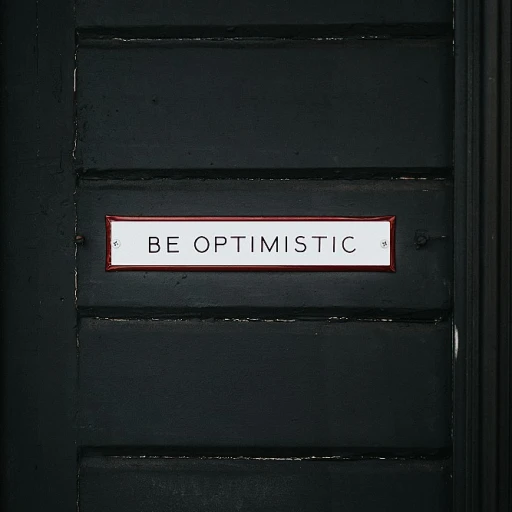The Evolving Role of the CHRO
CHRO's Impact on Business Leadership
The Chief Human Resources Officer (CHRO) is not just about managing HR functions anymore. Now, it's about contribution to strategic leadership. From leading initiatives that boost employee engagement to driving organizational change, the CHRO's role is all-encompassing. In today's business environment, changes happen rapidly, requiring the C-suite to be adaptive and proactive. The CHRO sits at the intersection of business strategy and workforce management, orchestrating the rhythm between growth objectives and people capabilities. Consider how PepsiCo's CHRO, Ramon Laguarta, succeeded his predecessor as CEO. His HR roots gave him an edge in leading one of the world's largest food and beverage companies. His thorough understanding of employee dynamics and business strategies allowed for seamless continuity and innovation—a perfect example of how impactful CHROs can be. The CHRO today crafts strategies that align closely with the overarching business plan, ensuring harmony between a company's human capital and its goals. This transformation is illustrated through new practices like data analytics in identifying talent trends and gaps, a technique explored further in other sections. If you'd like to explore how CHROs are serving as strategic partners in business success, consider reading more on how they align with business strategies.Aligning Human Resources with Business Strategy
Bringing HR and Business Strategy Together
In the corporate world, aligning human resources with business strategy isn't just a buzzword; it's a necessity. When HR leaders work hand-in-hand with the executive team, they can ensure that the workforce is ready to meet the company's goals. This alignment means more than just filling positions; it's about finding the right talent that fits the company's vision and culture.
Take, for example, a tech company aiming to innovate in AI. The CHRO must understand the skills required and work closely with the tech team to recruit and retain top talent. This strategic partnership can drive the company forward and create a competitive edge.
HR's Role in Business Success
The CHRO plays a pivotal role in shaping the company's future by aligning HR strategies with business objectives. This involves understanding market trends, anticipating future needs, and preparing the workforce accordingly. The ability to foresee and adapt to changes is what sets successful companies apart.
Consider a retail giant expanding into new markets. The CHRO needs to assess the talent landscape, understand cultural nuances, and develop strategies that support the company's growth plans. This proactive approach can lead to a seamless expansion and a stronger market presence.
Creating a Winning Workforce
Aligning HR with business strategy isn't just about strategy meetings and high-level discussions. It's about creating a workforce that is engaged, motivated, and ready to tackle challenges. This requires a deep understanding of employee needs and a commitment to fostering a positive work environment.
Companies that succeed in this area often see higher employee retention rates and increased productivity. By investing in employee development and well-being, businesses can build a loyal and high-performing team.
For more insights on aligning HR with business strategy, visit our CHRO insights for effective business strategy and leadership.
Talent Management as a Competitive Advantage
Building a Talent Arsenal for Competitive Edge
In a world brimming with skilled professionals, standing out means understanding talent management not just as a necessity but as a ticket to competitive supremacy. Any CHRO worth their salt knows that having the right folks can make all the difference. So, the big question is: How do companies turn this into a killer edge? It’s about more than just finding good people—it’s about optimizing each individual's potential while aligning their goals with the company’s mission. When {{keywords}} work hand-in-hand with business needs, remarkable things happen. Take Google, for example. Their knack for spotting talent doesn’t just stop at hiring. They cultivate a nurturing environment, feeding innovation and maintaining a culture that keeps their talent thriving and satisfied. This means everyone, from the rookie to the veteran, finds their sweet spot within the company's strategic aims. Going a step further, consider how data-driven insights redefine talent strategies. By capitalizing on analytics, companies are not just matching roles with individuals but improving retention. The numbers don’t lie—keeping employees engaged and motivated hinges on feeling valued and empowered. Giving them growth paths, opportunities to upskill, and recognizing their contributions keeps that competitive advantage burning bright—and it's not all about the salary. It's worth taking a peek at how it all ties together in the big strategy puzzle. Making nifty strategies work means folding HR into the core game plan. Consider learning from the pros—how these companies align HR with their goals to maintain their competitive talent advantage can be seen here. CHROs need to wear many hats, flexing from strategists to mentors. And let’s not forget agile methods. Broadening the focus beyond standard roles and functions propels teams to think innovatively. This isn't about fancy jargon—it's about real-world applications that bring out the best. In the end, it’s about creating a workplace where talent doesn’t just exist—it thrives and evolves with the company’s heartbeat.Leveraging Data for HR Decision-Making
Making the Most of Data for HR Decisions
Data-driven decision-making isn't just for tech folk. In today's business arenas, it’s a game-changer in human resources, too. The shift from gut instinct to data-backed choices empowers Chief Human Resources Officers (CHROs) to be strategic partners in the boardroom. But how do you use information effectively? Every decision you make casts a vote for the HR votes for company-wide success. The crux lies in employing data analytics to not only understand current trends but to forecast future needs. Whether it's leveraging employee engagement insights or predictive workforce planning, the data at your fingertips can shape policies and alter the growth trajectory.- Turn data into action: The first step is gathering relevant data—think employee surveys, retention rates, and performance metrics. However, don’t just sit on it; create actionable insights that drive policy changes and boost workplace morale.
- Holistic approach: Integrating HR data with large-scale corporate metrics ensures everyone speaks the same language. This not only aligns HR with broader strategies but also supports continuous benchmarking and the pursuit of uncompromised excellence.
- Talent analytics: Especially in competitive fields, understanding the talent pool is vital. Use quantitative data to tackle retention issues or enhance training programs, all while ensuring the company stays ahead in attracting top-notch candidates.
Fostering a Culture of Innovation
Ignite Innovative Mindsets
Innovation isn't just for tech start-ups in Silicon Valley; it's a necessity for every industry. Forward-thinking CHROs know that sustaining a culture where creativity flourishes can make a monumental difference. Let's explore how you can encourage this spark across your team. Creating an environment where employees feel comfortable to voice their wildest ideas requires a shift in mindset from top levels. Encourage experimentation by adopting an "It's OK to fail" mentality—where mistakes are seen less as failures and more as learning opportunities. Leaders set the tone, and when they show vulnerability, it allows others to feel safe doing the same.Break the Template
Traditional thinking often goes hand-in-hand with outdated practices. Regularly question the status quo by fostering an atmosphere where questioning processes is encouraged. Consider hosting "Innovation Days" or "Hackathons" where employees can dedicate time solely to brainstorming and working on new projects. This not only introduces fresh ideas but also strengthens team bonds. Additionally, building diverse teams can act as a catalyst for innovation. Diversity of thought stemming from varied backgrounds can lead to unexpected and ingenious solutions. Having multiple perspectives is like having more colors on a painter's palette—it just opens up more possibilities.The Power of Purpose
Linking people's roles to the larger purpose of the organization can significantly boost motivation and engagement. Employees who understand the "why" behind their tasks are more likely to innovate for the success of it. It's not just about individual progress but contributing to a larger mission. Aligning team and personal goals with the company's vision plays a critical role in nurturing an innovative climate. Organizational commitment to innovation needs more than just lip service. Investing in education and continuous learning opportunities like workshops or online courses encourages employees to acquire knowledge and skills that can lead to creative breakthroughs. When your team sees you investing in their development, it cements their belief in the company's dedication to innovation. Getting your workforce onboarded with a culture that embraces change and innovation may not be easy, but it's necessary. In a rapidly changing business environment, it’s those willing to adapt and innovate who will thrive. Consider your strategies and see where you can sprinkle a little magic to boost creativity. For additional thoughts on driving such strategic shifts, consider visiting CHRO insights for driving success.Navigating Change and Transformation
Guiding Through Change
Change is the only constant in business, and those in leadership roles, especially CHROs, know this all too well. The ability to lead through change effectively is what separates thriving organizations from those that struggle. Whether it's a shift in company culture, a new technology implementation, or a strategic pivot, CHROs play a pivotal role in ensuring smooth transitions.
One of the most effective ways to manage change is by fostering open communication. When employees understand the reasons behind a change, they're more likely to embrace it. This means being transparent about challenges and opportunities, and actively listening to feedback. By doing so, CHROs can build trust and create a supportive environment where employees feel valued and heard.
Building Resilience
Resilience is another key factor in managing change. Organizations that can bounce back from setbacks and adapt quickly to new circumstances are more likely to succeed. CHROs can help build resilience by encouraging a growth mindset among employees. This involves promoting continuous learning and development, recognizing and rewarding adaptability, and providing resources for mental and emotional well-being.
Moreover, aligning HR strategies with business goals, as discussed earlier, ensures that the workforce is prepared for change. When employees understand how their roles contribute to the bigger picture, they're more motivated to adapt and innovate.
Championing Innovation
Innovation is often born out of change, and CHROs are uniquely positioned to champion this within their organizations. By fostering a culture of creativity and experimentation, they can encourage employees to think outside the box and explore new ideas. This not only drives business growth but also enhances employee engagement and satisfaction.
In conclusion, navigating change and transformation requires a strategic approach, strong leadership, and a supportive organizational culture. By focusing on communication, resilience, and innovation, CHROs can guide their organizations through change and emerge stronger on the other side.





-large-teaser.webp)








